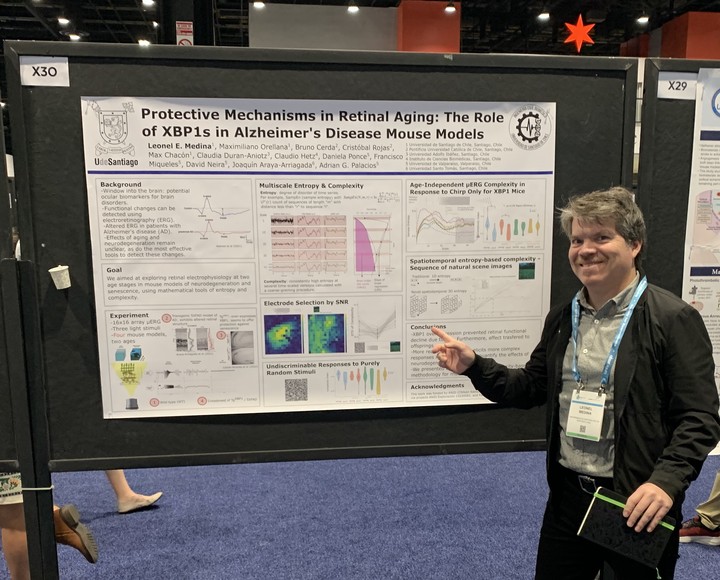Protective Mechanisms in Retinal Aging: The Role of XBP1s in Alzheimer's Disease Mouse Models

The retina has long been considered a window into the brain, generating significant interest in identifying potential ocular biomarkers for brain disorders. Functional changes in the retina can be detected using electroretinography (ERG). In fact, recent research has revealed alterations in the characteristics of the ERG in patients with Alzheimer’s disease (AD). However, the effects of aging and neurodegeneration on retinal electrophysiology remain unclear, as do the most effective tools to detect these changes. Furthermore, recently proposed protective mechanisms against brain cell senescence, such as the overexpression of the transcription factor XBP1s, may be reflected in retinal electrophysiology. In this study we used entropy tools to explore the complexity of retinal dynamics in two age stages: young (2-5 months) and adult (5-8 months) in four mouse models: wild-type (WT) (n= 8 young, 9 adult), AD 5xFAD transgenic model (n = 9, 10), Tg XBP1s mice (n = 7, 6), and a crossbreed Tg XBP1s / 5xFAD (n = 6, 7). We applied a chirp light stimulus—a flashlight followed by sinusoidal light of increasing frequency and then increasing amplitude light—to retinas ex vivo while recording μERG responses from a multielectrode recording array (MEA). We calculated the multiscale entropy (MSE) of the μERG signals and estimated a complexity index as the slope of the linear regression of the MSE curves. The median complexity index (upper: lower quartile) of all young groups was positive: WT young 4.6 (6:1.4), 5xFAD young 2.4 (3.5: -1.7), Tg XBP1s young 1.7 (2.4: 0.18) and Tg XBP1s / 5xFAD young 0.94 (1.7: -1.4), which was higher than those of the respective older groups: WT adult -2.2 (0.98:-11.4), 5xFAD adult -5.3 (-3:-8.9), Tg XBP1s adult 0.09 (3.4:-2.1) and Tg XBP1s / 5xFAD adult 0.89 (1.7:-1.4). This reduction in complexity among older groups supports the theory of loss of complexity with age. Furthermore, the 5xFAD groups exhibited lower complexity compared to their respective WT groups, consistent with a theory of loss of complexity in the disease. Tg XBP1s overexpression appeared to confer protection against aging, a benefit that extended to Tg XBP1s / 5xFAD animals, suggesting that Tg XBP1s may counteract aging and neurodegenerative mechanisms in the retina. These findings not only advance our understanding of retinal electrophysiology with aging but also have significant implications for the identification of new AD biomarkers and the development of novel therapeutic strategies.